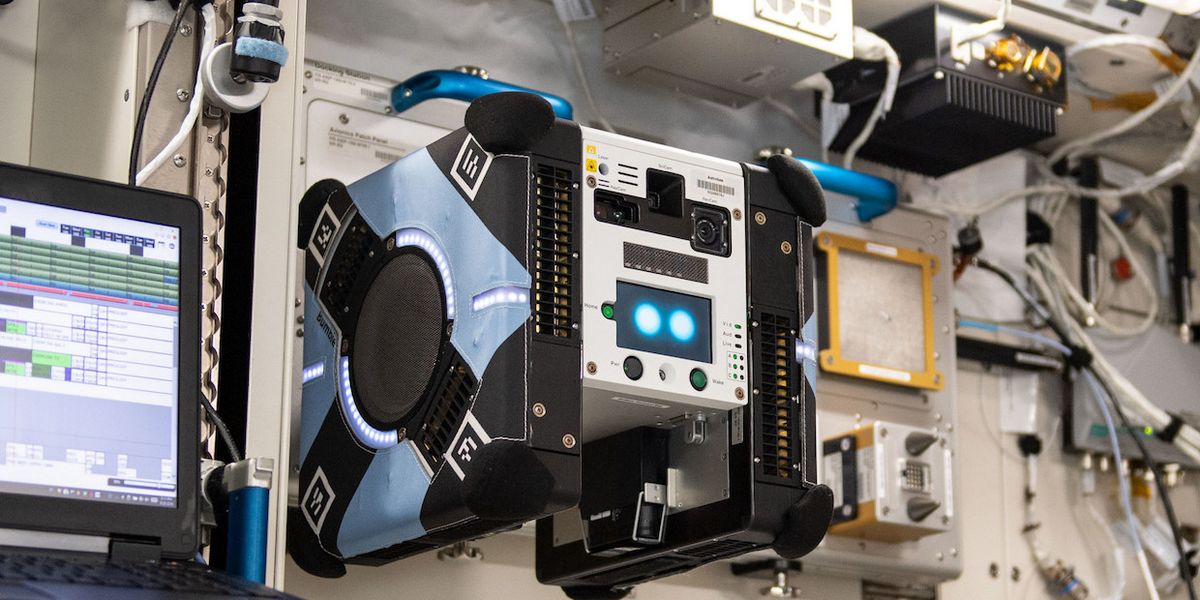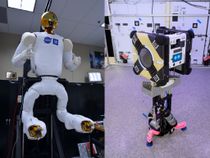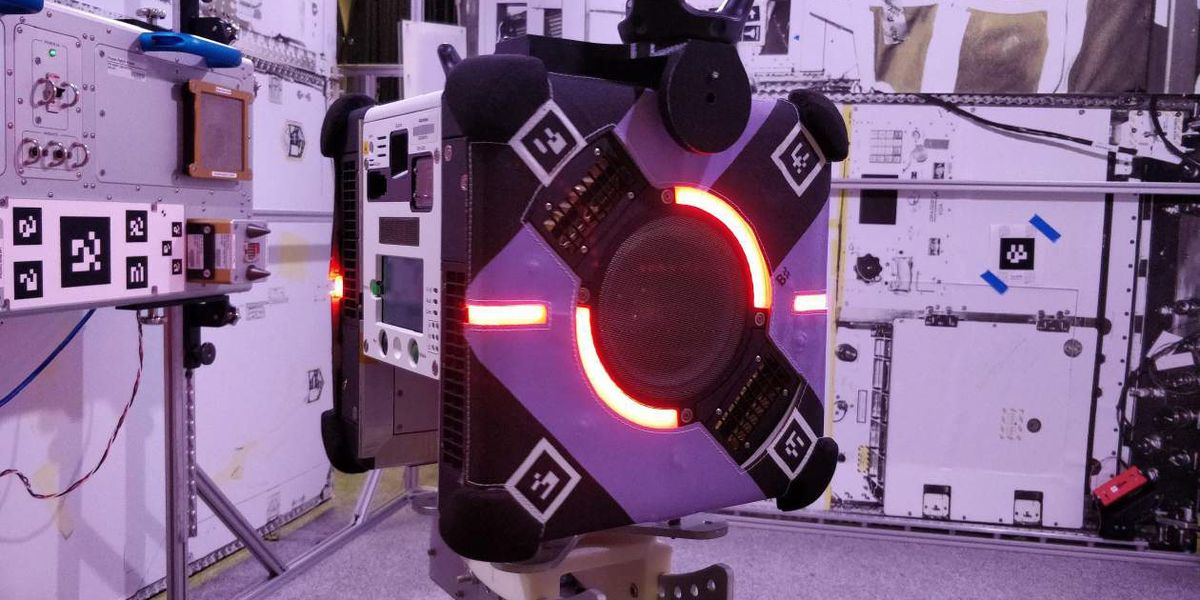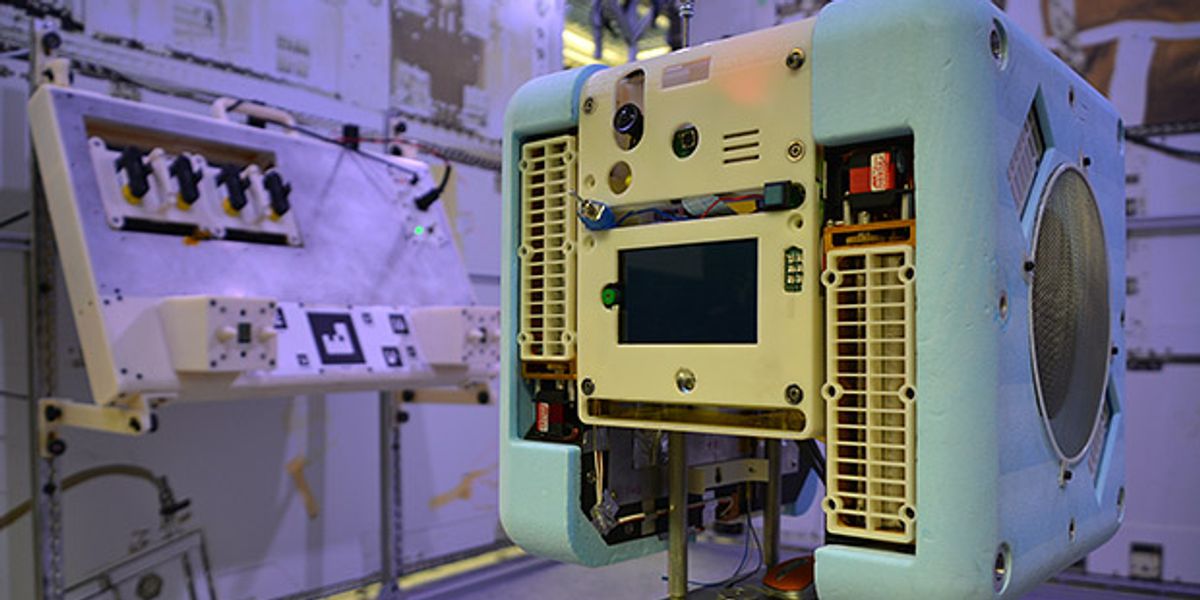Astrobee
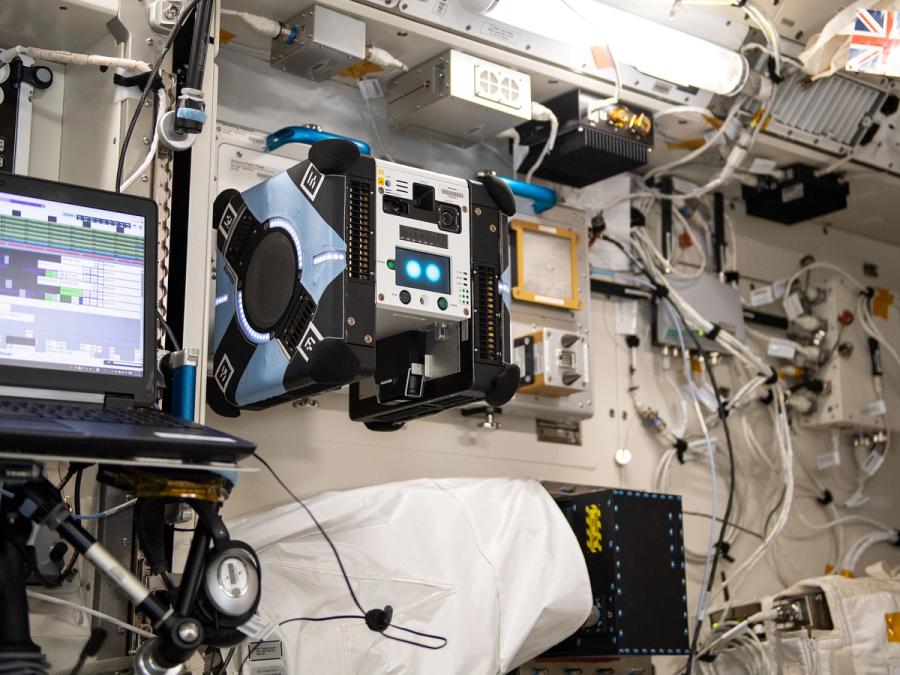
Astrobee is a free flying robot designed to work on the International Space Station. It can navigate around the ISS autonomously, and will perform useful tasks for the astronauts.
- Creator
- Year
- 2019
- Country
- United States 🇺🇸
- Categories
- Features
Did you know?
Each Astrobee has a bee-related name, including Queen, Honey, Bumble, Melissa, and Killer.
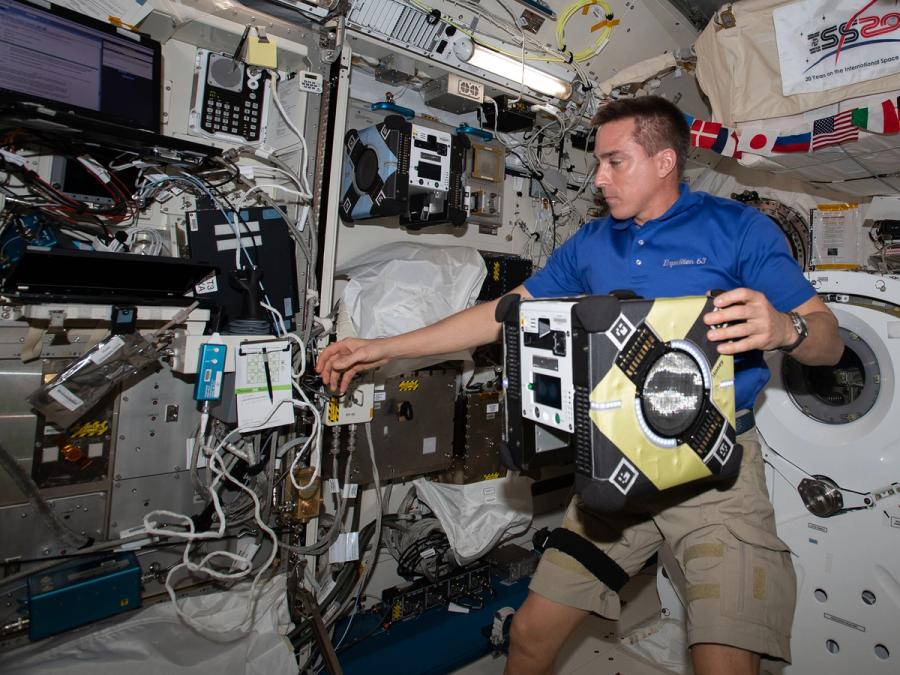
History
Before Astrobee, there were SPHERES (Synchronized Position Hold, Engage, Reorient, Experimental Satellite), which were free flying robots operating aboard the International Space Station since 2006. Astrobee is a new generation of robotic free fliers that's more advanced, versatile, and will be a big help for the humans on the ISS. One of the biggest improvements is the propulsion system. On two faces of Astrobee, behind a protective screen, there's an impeller: A big fan that sucks in air. The impellers, which counter-rotate with each other to minimize gyroscopic forces, are constantly generating a pressurized pocket of air inside of the robot, which is directed out of steerable nozzles on each face. If all of the nozzles are closed, Astrobee doesn't move, and opening them individually or in combination generates thrust, which moves the robot in the opposite direction. After launching to space in 2019, three Astrobees are currently at the ISS: Bumble, Honey, and Queen Bee. In 2021, for the first time, Astrobee demonstrated autonomous free flight in space.
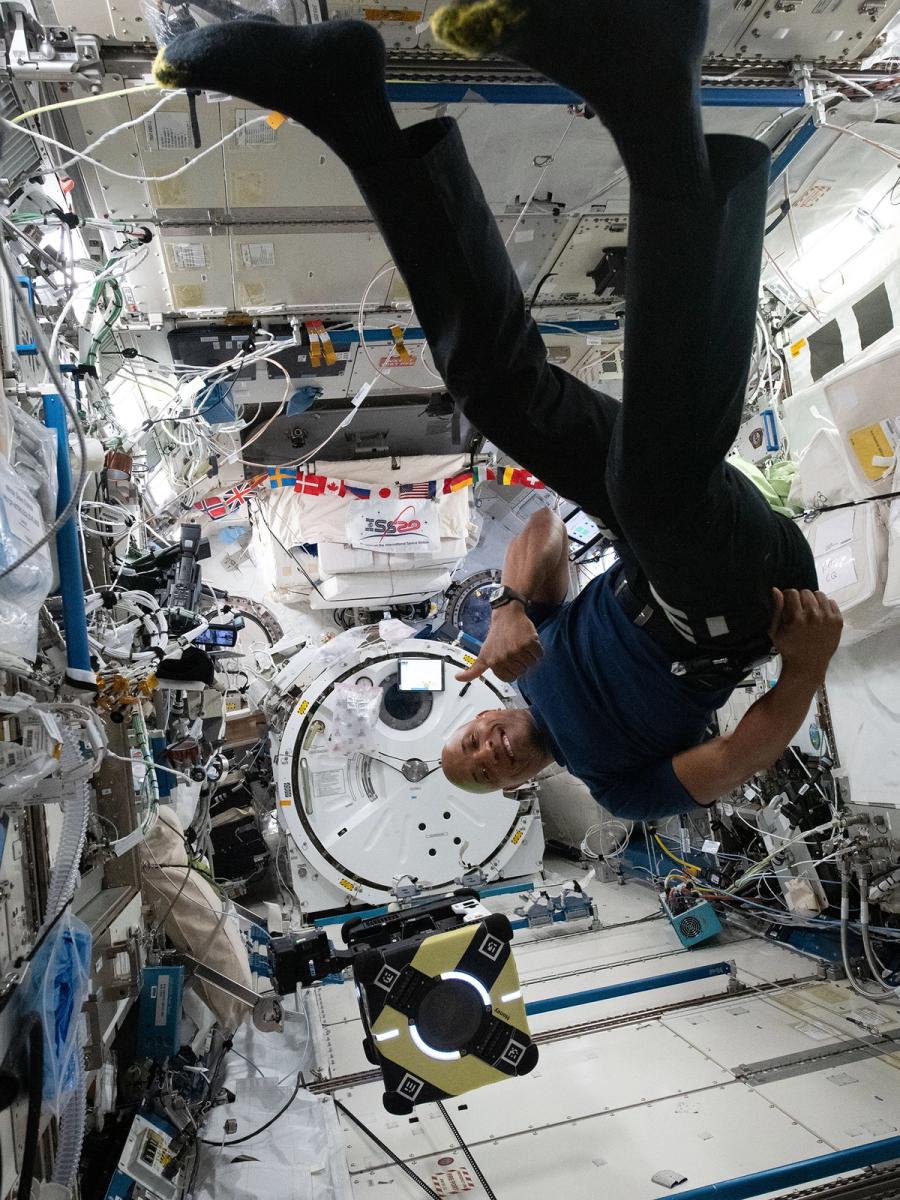
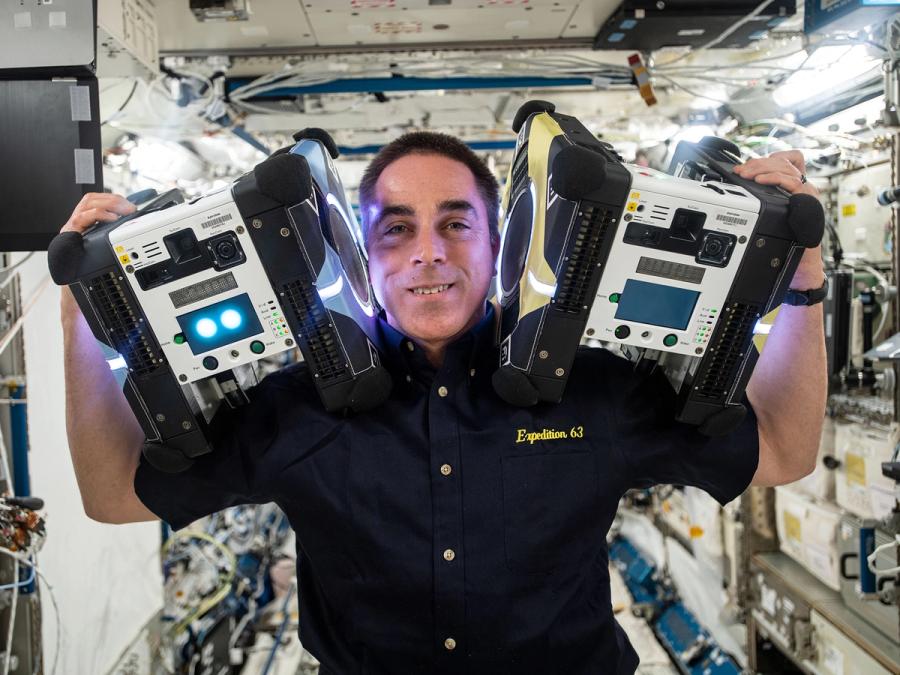
Specs
- Overview
Autonomous navigation. Electrically-powered propulsion system. Can move or rotate in any direction using two impellers that generate a pressurized pocket of air inside of the robot, which is directed out of 12 steerable nozzles. Perching arm for gripping handrails. Modular bays for guest scientist payloads.
- Status
Ongoing
- Year
2019
- Website
- Width
- 30.5 cm
- Height
- 30.5 cm
- Length
- 30.5 cm
- Weight
- 6 kg
- Sensors
NavCam and DockCam, 1.2-megapixel 130° FOV RGB cameras. PerchCam and HazCam, Pico Flexx lidars. SciCam, 13-megapixel RGB smartphone camera. SpeedCam, PixHawk PX4Flow integrated sonar/optical flow sensor.
- Actuators
Perching arm with three degrees of freedom (two joints and gripper).
- Degrees of Freedom (DoF)
- 6 DoF (can translate or rotate in any direction in microgravity)
- Materials
Aluminum, 3D-printed propulsion modules, foam bumpers.
- Compute
Low-level, mid-level, and high-level processors. Four-core 2.5 GHz.
- Software
- Power
Dual 14.4-V 49-Wh lithium-ion batteries.
